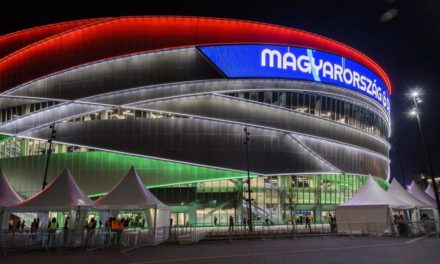As a music initiation institution, the Hungarian Music House awaits the public with concerts, an interactive exhibition, a musical creative space and music pedagogy classes, from Sunday, for which several thousand people have already booked tickets in advance.
Looking back at the birth of the idea of the House of Hungarian Music, László Baán said that as a starting point, they wanted to liquidate an old debt: even though music is the most recognized branch of Hungarian art around the world, there was still no comprehensive music history exhibition anywhere in Hungary.
We created a professional working committee to develop the comprehensive concept of the House of Hungarian Music. As a result, it was proposed to create a complex institution that would house not only a permanent music history exhibition, but also temporary exhibitions and a special sound dome, as well as hosting concerts and numerous music initiation programs as well as music pedagogy sessions.
he looked back.
This is how the triple basic function of the house was formed: exhibitions, concerts and music pedagogy, and it was to this demand that the international architectural design competition was launched, which was unprecedented in Hungary for almost a hundred years. Out of more than a hundred anonymous applications, the international jury chose the plans of a world great, Su Fujimoto, who dreamed up a brilliant building with exactly the desired functions, he reminded.
According to László Baán, the three divisions of the building correspond to the triple function: the beautiful, glass-walled ground-floor space is for music events, the special roof structure is for education, and below the square floor are the exhibitions and the sound dome." Master Fujimoto also said that he actually applied for because he sensed a fantastic opportunity in the tender: in the heart of a European cultural metropolis there is a green park, and within it - looking back on a 130-year tradition - there are cultural institutions. For the investment, we selected an extremely neglected, dilapidated area within the Liget, largely closed to the public, where the +more culture and more greenery in the City Park+ concept could be fully implemented," he recalled.
As he added, Fujimoto Sút was inspired by this historically characteristic unity of culture and green spaces in Liget, and in his project he managed to achieve a world-class fusion of nature and building: glass walls, unusual in music institutions, visually open the house to the park, and vice versa true. In addition, the highest point of the building remains below the canopy level, from spring to autumn it almost disappears in the embrace of the trees, he emphasized.
László Baán highlighted: Europe's largest glass wall without horizontal divisions was created here, with panes of glass almost four stories high in some parts, but the organic form of the building also strengthens the close connection with nature. It is no coincidence that the building has already won many international awards, he noted. He also emphasized that the pioneering technical solutions and unusual design ideas dreamed up in the plans were fully realized thanks to the excellent cooperation between the architectural office, the contractor Magyar Építő and the investor Városliget Zrt.
Anyone who visits here can see that the finished building does not simply match the visual plans, but is even more beautiful in person: the House of Hungarian Music will become a new attraction, an iconic jewel of the capital city.
he praised the investment.
From Sunday, the house will also open its doors to the public, so anyone can visit its special spaces and the permanent exhibition. In the first days, you can hear free concerts by music academicians, then the concert program starts and gradually gets denser.
As he pointed out, the permanent music history exhibition that will open on more than 1,000 m2 will be uniquely complex of its kind in Hungary, but perhaps also in the whole world. The interactive exhibition takes the visitor through several hours of things to see, listen and discover, from the birth of music through the great currents and masters of European and Hungarian music to the present day.
The unique creative sound space opens in April, which offers special experiences as a kind of "palace of musical wonders", and in autumn the first temporary exhibition will be presented, recalling the history of Hungarian light music of the decades before the regime change. Later, there will also be international topics, for example a Rolling Stones exhibition is being discussed, he revealed.
László Baán drew attention to the institution's https://magyarzenehaz.com , where you can book tickets. Although sales only started two weeks ago, several thousand people have already bought tickets, and there are already sold-out concerts, he said.
As he emphasized, the House of Hungarian Music is a complex music initiation institution that does not want to compete with other concert venues in Budapest, but rather complement them. Accordingly, the musical offer will be very diverse, from classical music to jazz, world and folk music to pop and electronic music, almost every genre will be represented in the program.
Next to the house, there is a musical playground, which was created with the involvement of Canadian specialists, and in the summer, the institution's open-air stage is also open to the public. Moreover, the park arrangement around the soon-to-open Museum of Ethnography will be completed by spring, as well as the local section of the city park promenade and the museum's roof garden, so new areas of the park can be filled with life, said László Baán.
MTI
Featured image: László Baán, ministerial commissioner of the Liget Budapest project, gives a speech at the opening of the House of Hungarian Music completed in the Liget Budapest project on January 22, 2022. MTI/Koszticsák Solid













